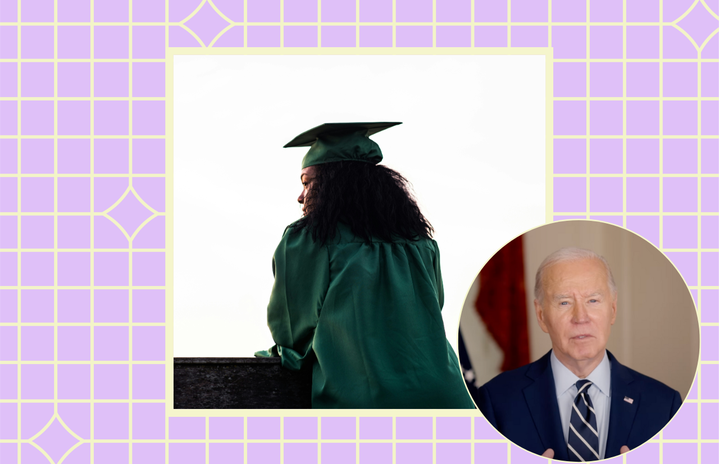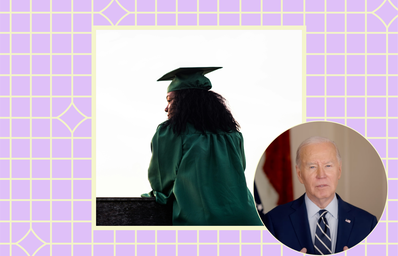Student debt has been a huge point of contention throughout the duration of President Joe Biden’s administration, starting even back before he was in office, when he ran on the promise of student loan forgiveness during the 2020 presidential election. Now in 2024, after multiple setbacks and in the leadup to yet another election, the president has announced a new plan he hopes to enact. So, who is eligible for Biden’s 2024 student loan forgiveness plan, and what does it entail? Here’s what to know.
On April 8, 2024, the White House revealed Biden’s new plan to broadly forgive student loan debt. This comes after the Supreme Court officially blocked POTUS’ sweeping student debt relief plan in June 2023, ruling that Biden overstepped his authority with his plan to eliminate $400 billion worth of student debt. The new plan takes an alternative path from the one before, using a practice called negotiated rulemaking to target specific groups affected by student debt. According to a press release shared by the White House, the plan, if it goes forward, would fully eliminate accrued interest for 23 million borrowers, cancel the entire amount of student debt for more than 4 million borrowers, and provide relief to more than 10 million borrowers who have at least $5,000 in debt.
“My administration has approved debt cancellation for 4 million Americans through various actions,” Biden said in an April 8 video shared on social media, referring to the various executive actions he’s enacted during his presidency thus far in service of student debt relied. “Today, I’m announcing new plans that would cancel student debt for millions more. These plans would cancel some or all student debt for 30 million Americans, when combined with everything we’ve done so far.”
Let’s unpack how this plan might turn out.
Who is eligible for Biden’s 2024 student loan forgiveness plan?
This new plan has a multi-pronged approach, designed to provide debt relief and forgiveness to the following groups:
- Borrowers who have balances bigger than what they originally borrowed due to interest
- Borrowers who already qualify for existing student loan forgiveness programs (including SAVE, PSLF, closed school discharge, and more) but haven’t applied for them
- Borrowers who began paying off their loans at least 20 years ago
- Borrowers who enrolled in “low financial value” programs (aka, programs that students went into debt for but left without good job prospects)
- Borrowers experiencing financial hardship that would inhibit them from paying off their loans now or in the future
Individuals who want to learn more about whether this plan could affect their own student loan debt can visit the Federal Student Aid website.
What are the next steps for the plan?
Although the announcement of this plan is exciting for many facing student loan payments, there’s still a long way to go before it could be put into action. Next up, this plan will go through a public comment period — which allows the public to provide feedback on the proposals — before the Department of Education creates a finalized version of the plan.
If the plan is finalized as-is, the White House could begin enacting parts of it as early as this fall, according to the White House’s press release. But of course, there’s always the chance it faces legal roadblocks like the ones that caused Biden’s last attempt at large-scale debt forgiveness to fail.
However, the Biden administration appears committed to student debt relief. Per CNN, White House press secretary Karine Jean-Pierre addressed concerns of more legal holdups during an April 7 press call, saying, “President Biden will use every tool available to cancel student loan debt for as many borrowers as possible, no matter how many times Republican elected officials try to stand in his way.”


